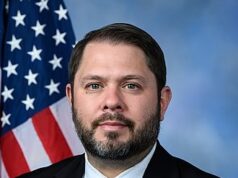Under the President’s High Growth Job Training Initiative (HGJTI), the Department of Labor Employment and Training Administration (DOL-ETA) has announced the availability of approximately $10 million in grant funds for high-impact regional approaches to meet the workforce challenges of the energy industry and/or address the shortage of construction and skilled trade workers needed to maintain and expand the energy industry infrastructure.
The President’s HGJTI is a strategic effort to prepare workers for new and increasing job opportunities in high-growth, high-demand, and economically vital industries and sectors of the American economy. Through the initiative, ETA identifies high-growth, high-demand industries, evaluates the skill needs of those industries, and funds local and national partnership-based demonstration projects that: (a) Address industry-specific workforce challenges within the context of regional talent and economic development strategies; and (b) prepare workers for good jobs with career pathways in these rapidly expanding or transforming industries. ETA will broadly disseminate the products, models, and effective approaches that result from HGJTI investments to employers, education and training providers, and the workforce system, building their capacity to respond to employers’ workforce needs in high-growth, high-demand industries that are a part of regional economies.
Grant funds awarded under this Solicitation for Grant Applications (SGA) should be used to implement and replicate high-impact, industry-driven training solutions that address identified workforce challenges in the energy industry or in the construction and skilled trade occupations that support the energy industry. Each solution must take place in the context of a regional talent development strategy designed to contribute to a strong regional economy. The solutions must be developed and implemented by a strategic regional partnership, which includes leaders from the workforce investment system, business and industry, and the education and training community, as well as other public and private sector partners that bring critical assets to the joint venture. Proposed solutions should take full advantage of existing workforce development models, promising practices, and tools. Solutions must implement an existing promising solution, model, or approach and take it to scale in the region, or adapt a solution that has been demonstrated to have positive impact on the identified workforce development challenges in another region.
Eligibility: Applicants may be public, private for-profit, or private non-profit organizations.
Grant Award Amount: It is anticipated that average individual awards will fall within the range of $500,000 to $1 million.
Due: The closing date for receipt of applications is March 25, 2008.
A Webinar for prospective applicants will be held for this grant competition on February 1, 2008. Access information for the Webinar will be available on Workforce3one.org.
The January 23 Federal Register provides full background, outlines the eight parts of the Solicitation, presents the application requirements and evaluation criteria, and furnishes instruction for the submission of the application.
The Solicitation is available at www.doleta.gov/sga and www.grants.gov.
Please note that the Solicitation includes the following text:
Partnerships with faith-based and community organizations are encouraged. Grantees may elect to sub-award funds to faith-based and community organizations to perform a variety of grant services such as case management, mentoring, and English language programs, among others. Faith-based and community organizations can also provide wrap- around holistic and comprehensive support services, where appropriate. Please note, however, that identifying an organization as a partner does not waive applicable source selection requirements.













